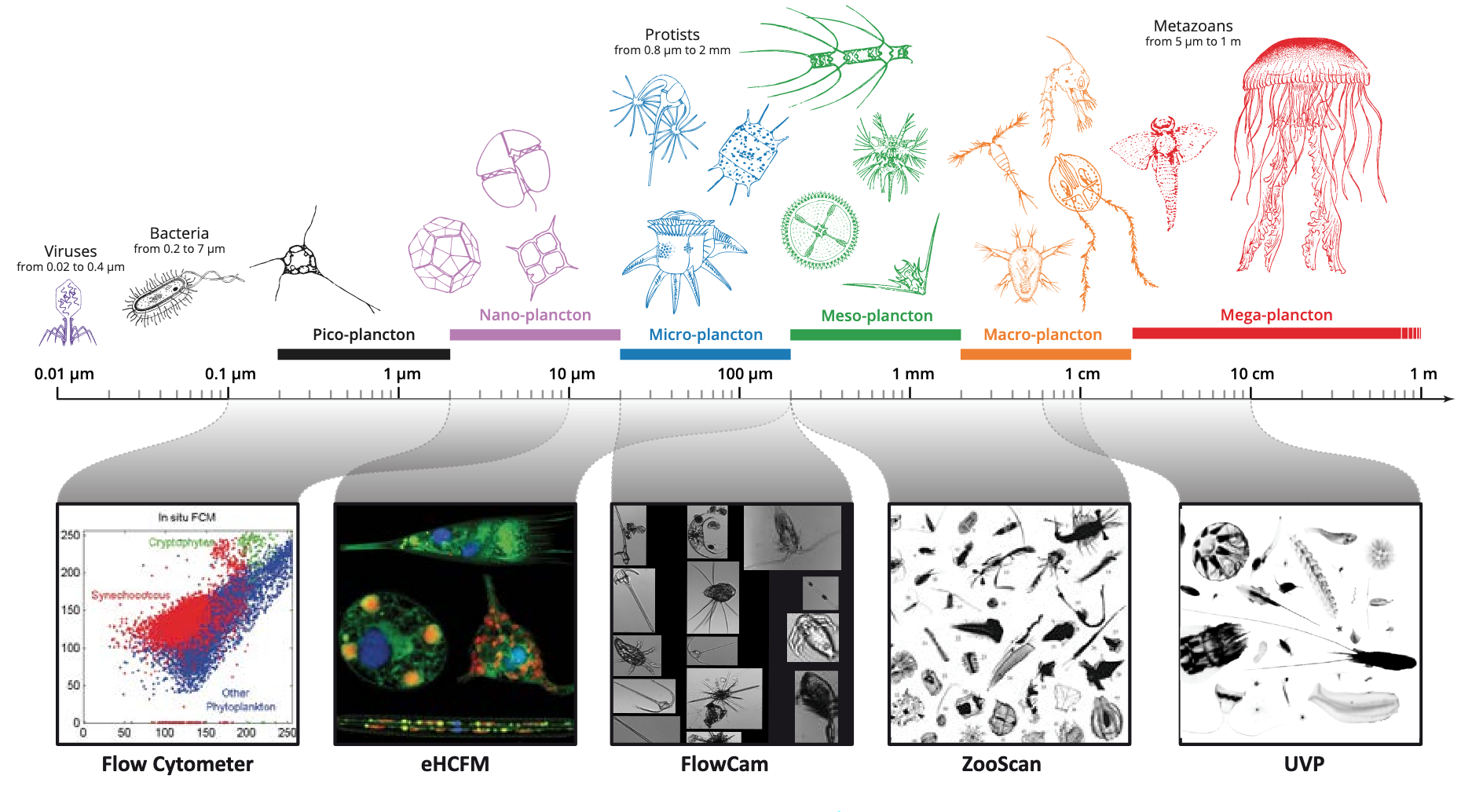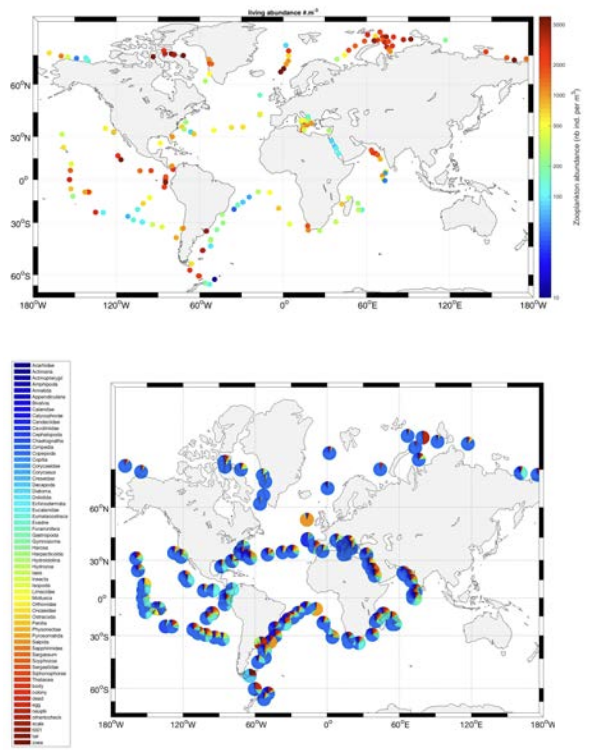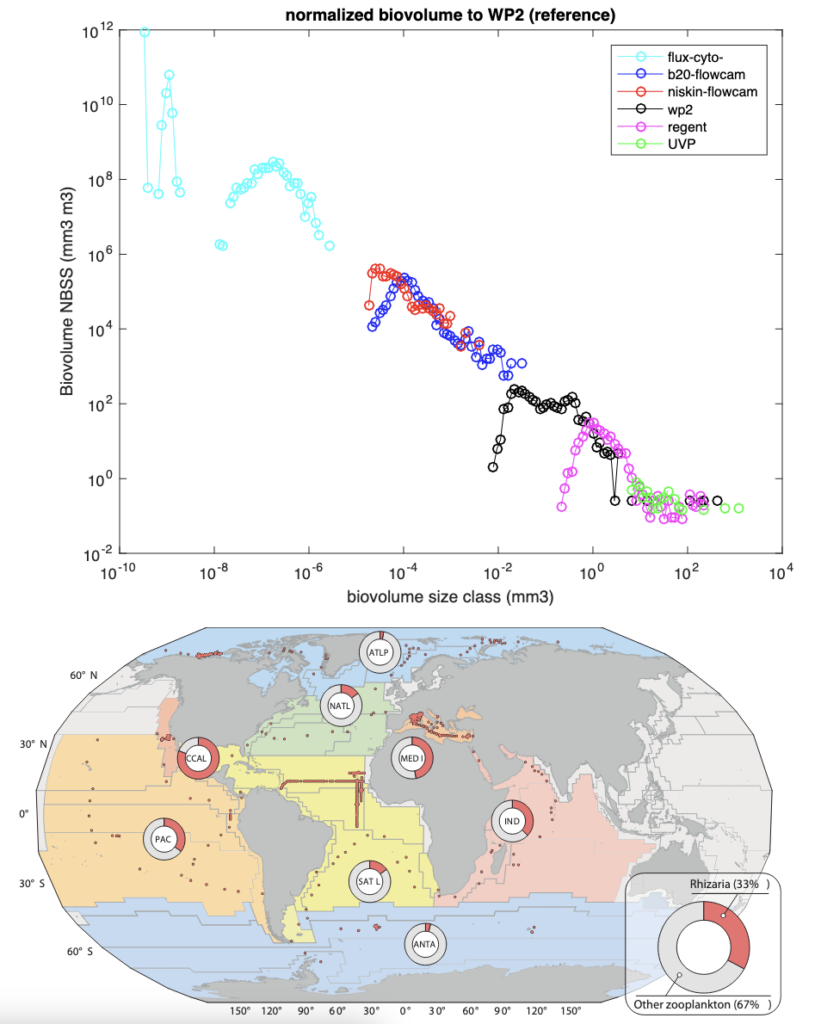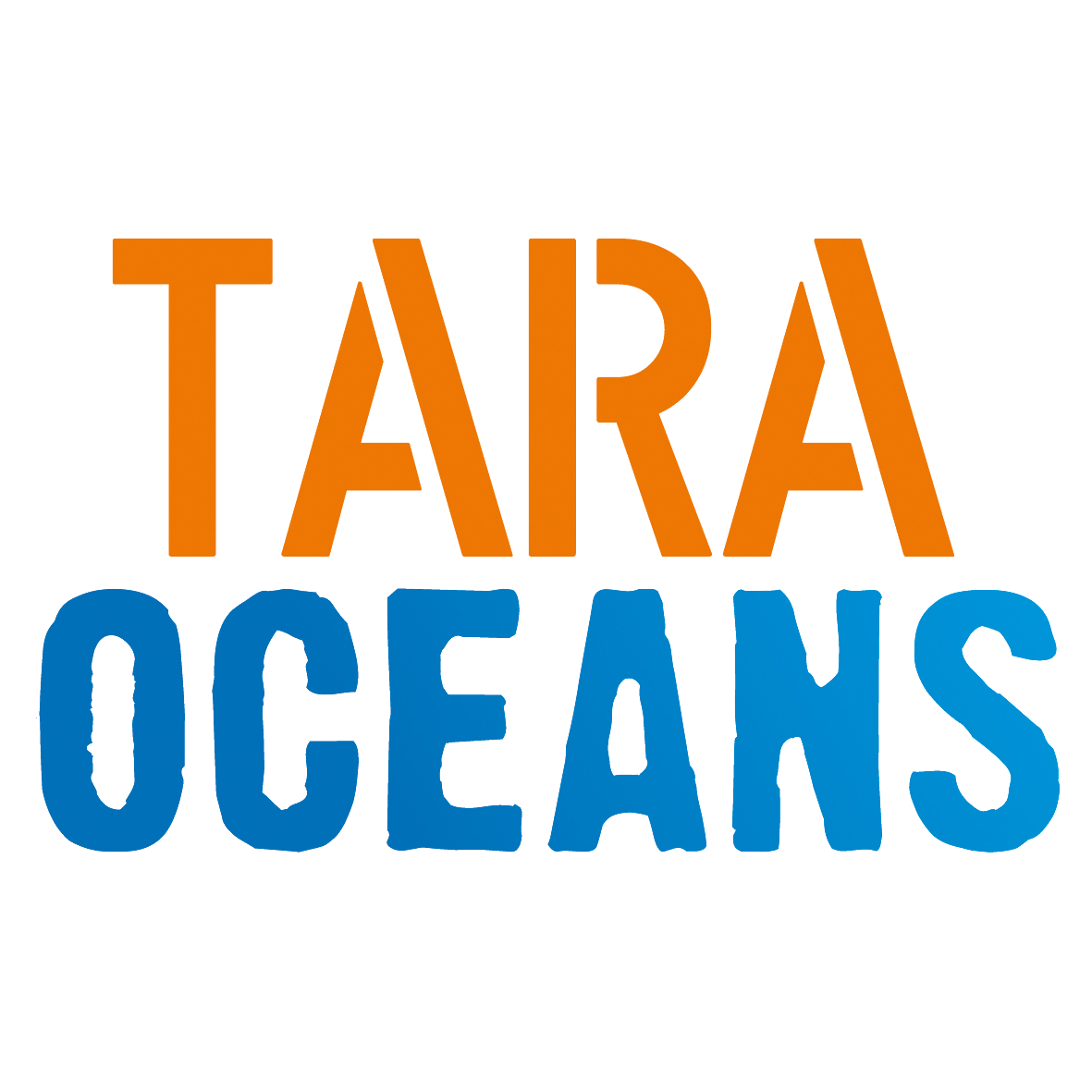Zooplankton contains the giants of the drifting realm. These organisms play a pivotal role in the ocean by transferring energy and biomass from the microbial loop to higher trophic levels and are central in global biogeochemical cycles (Guidi et al, Nature, 2016). Biodiversity patterns in planktonic animals are much less understood than for their terrestrial counterparts. In Tara Oceans, we used five different types of nets (Table 2) to collect a unique collection of ~1 500 standardized zooplankton samples from surface to a few hundred meters depth across the world ocean (Deliverable A2). Imaging and ‘omics’ tools were then used to assess the morpho-genetic complexity of zooplankton communities in well-defined oceanographic provinces.
In terms of imaging, all zooplankton samples have now been analyzed and their great majority validated by experts using EcoTaxa (>6 million images on http://ecotaxa.sb-roscoff.fr/; Table 2). Images were used to assess the mechanisms contributing to the limited dispersal of Indian Ocean plankton populations into the Atlantic (Villar et al. Science, 2015). In the Indian Ocean, combined imaging datasets have shown the absence of metazoan plankton in the Oxygen Minimum Zone, and its effect on carbon flux (Roullier et al., 2014). Based on in situ video profiling (UVP) performed at each Tara Oceans station, we demonstrated that the biomass of rhizarian protists, undersampled by nets because of their fragility, may in fact be equivalent to that of all other mesozooplankton in the oligotrophic inter-tropical open oceans (Biard et al. Nature, 2016). On the ‘omics’ front, Tara Oceans samples were used to reconstruct the macro- evolutionary history of sea snails (Thecosomata) using a combination of morphological and molecular data (Corse et al., Plos One, 2013). Thecosomata display 4 major morpho-genetic diversification events that coincide with climate events from the Eocene to the Miocene, and are apparently driven by skeleton selection to avoid predation or improve buoyancy. A comprehensive phylogenetic study of chaetognathes based on complete rDNA genes has shown how their evolution corresponds to simplification of a pre-existing body plan, rather than increase in morphological complexity (Gasmi et al, Frontiers in Zoology, 2014). However, these studies are just scratching the tip of the iceberg of morphogenetic information hidden in the Tara Oceans comprehensive zooplankton collection, and efforts to sequence metabarcodes and genomes of the main players and correlate genetic to imaging information is needed.
Figure 6. Zooplankton automated imaging strategy. Upper panel. The suite of automated imaging workflows implemented in Tara Oceans, from Flow-Cytometry to Underwater Video Profiler (UVP), are generating millions of single plankton images from <1μm to a few cm. Single organisms’ images are stored and organized online via the expert-annotation platform EcoTaxa (http://ecotaxa.sb-roscoff.fr).



Figure 6. (following) Medium panels. Left: abundance (# of individual/m3) of total zooplankton from the WP2-net samples (200μm-1cm, Zooscan-data) in all Tara Oceans stations. Note the relatively high zooplankton abundance in polar and tropical upwelling ecosystems. Right: Example of a meta- plankton sample based on total plankton abundance data measured by Flow Cytometer, FlowCam (both total water and 20µm net samples), ZooScan (from 200 µm-WP2 and 680 µm-Regent nets samples), and UVP (in situ imaging), at a single station (here TO Polar Circle Station 168). It shows how the suite of imaging methods can be merged to provide a holistic and quantitative morphological view of a plankton community. Lower panels: Left: relative abundance of >60 taxonomic groups of zooplankton as measured by ZooScan on the Regent-net (680μm-1cm) samples, showing how metazoan diversity behaves along the Tara Oceans stations, with an overall dominance of copepods (in blue). Right: The dominance of copepods was challenged by the non-destructive view of meso/macro plankton provided by the UVP. Global UVP data (~700 profiles down to 500m depth here) show that giant protists (rhizaria) are more abundant than all metazoan plankton together in (sub)tropical biomes.
